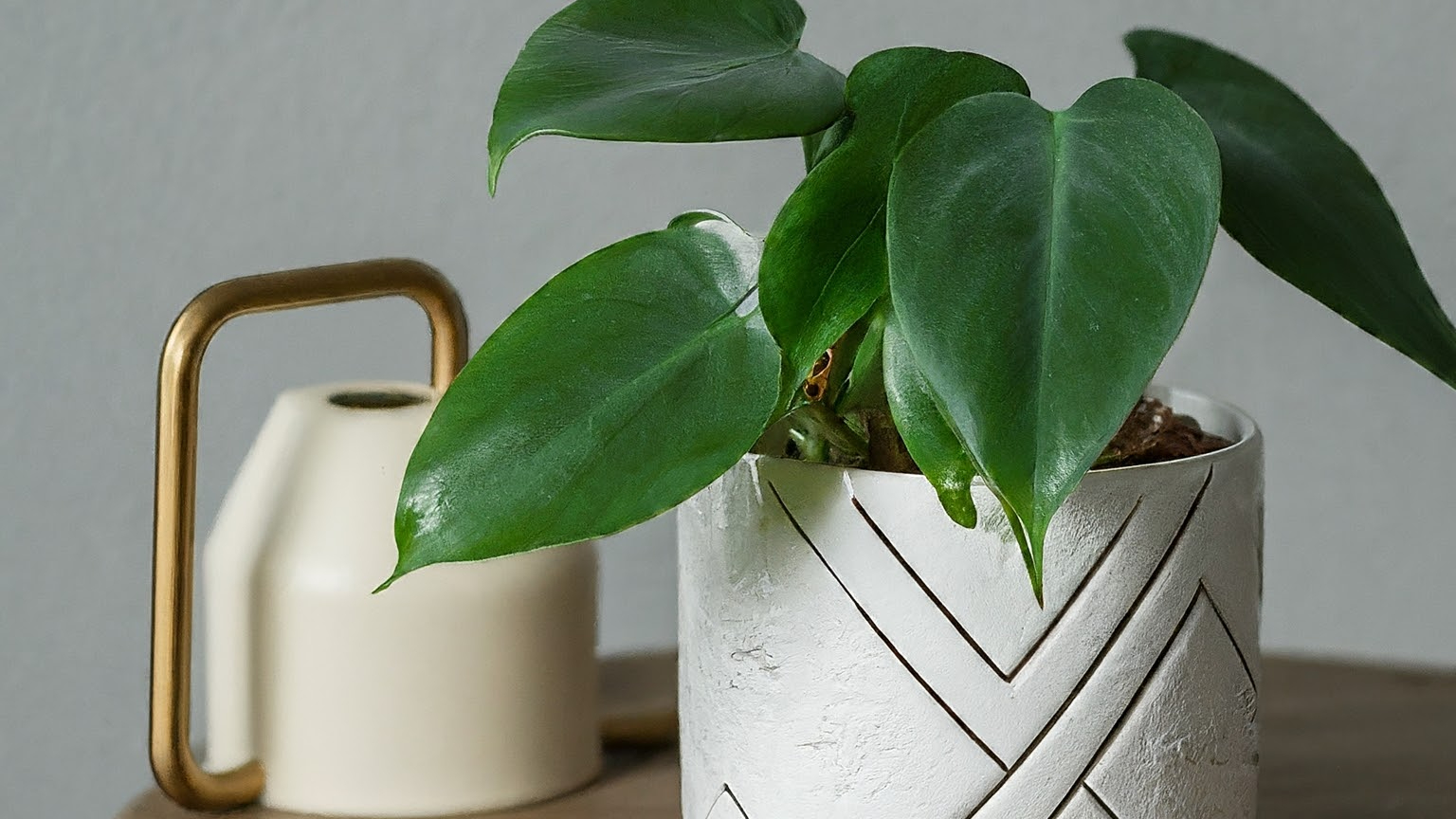Last updated on March 8th, 2024 at 03:12 am
Philodendrons are renowned for their lush foliage and ease of care, Beyond their aesthetic appeal, philodendrons have fascinating characteristics that make them a popular choice among plant enthusiasts. Belonging to the Araceae family, these tropical plants are native to the rainforests of Central and South America. They are admired for their broad, glossy leaves and their ability to adapt to various indoor environments, making them ideal choices for home or office settings.
Despite their resilience, philodendrons require proper watering to maintain their vigor and vitality. Overwatering can lead to root rot, while underwatering can result in drooping leaves and stunted growth. Therefore, learning how to water your philodendron correctly is essential for its long-term health and longevity. Understanding the basics of philodendron watering can ensure your plant remains vibrant and healthy for years to come.
By following simple guidelines and paying attention to your plant’s needs, you can ensure that your philodendron thrives and continues to grace your living space with its lush green foliage. Remember, mastering the art of philodendron watering is an investment in the beauty and well-being of your beloved plant.
Contents
- 1 Basic Philodendrons Watering
- 2 Ideal Frequency of Philodendron Watering
- 3 Watering Amount
- 4 Importance of Drainage
- 5 Watering Routine for All Seasons
- 6 Water Quality for Philodendron Watering
- 7 Choosing the Right Soil and Pot for Your Philodendron
- 8 Signs of Overwatering in Philodendron
- 9 Solutions for Overwatering
- 10 Signs of Underwatering in Philodendron
- 11 Solutions for Underwatering
- 12 FAQs
- 13 Mastering Philodendron Watering
- 14 Author
Basic Philodendrons Watering
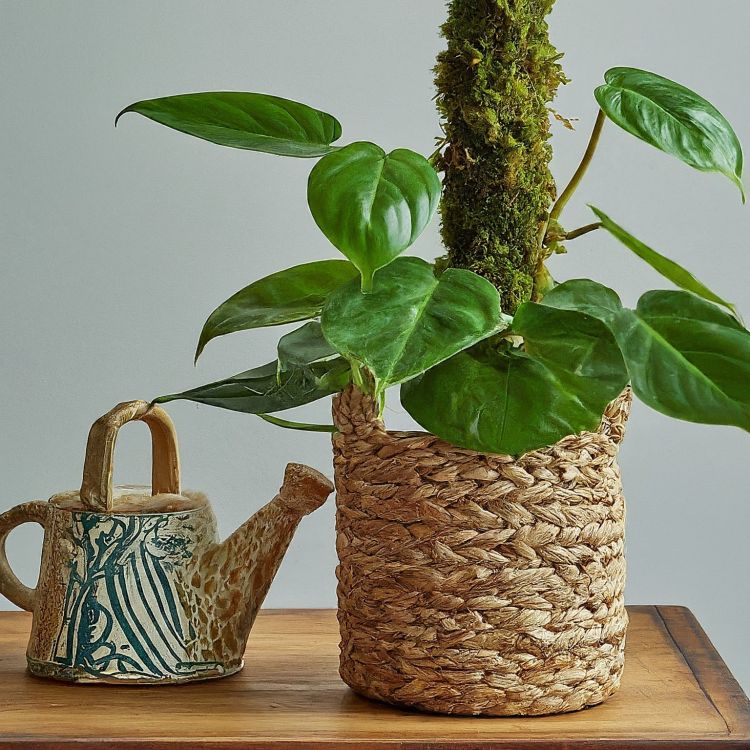
Philodendrons, like many houseplants, prefer a balance between being moist and dry. Overwatering can lead to root rot, while underwatering can cause wilting and leaf damage. The key is to provide consistent moisture without allowing the roots to sit in waterlogged soil.
When watering your philodendron, thoroughly saturate the soil until water begins to drain from the drain holes of the pot. This shows that the whole root system is moist. Allow the top inch or two of soil to get dry before watering again.
Ideal Frequency of Philodendron Watering
The frequency of philodendron watering is influenced by various factors, including pot size, soil type, environmental conditions, and specific philodendron species. A useful rule of thumb is to check the soil moisture by feeling the top inch with your fingers. If it’s dry, it’s time to water; if it’s still moist, hold off.
Monitoring your philodendron closely allows you to adjust the watering schedule according to its needs. It is important to provide enough moisture to keep the plant healthy while avoiding waterlogged conditions that promote root rot. Remember, philodendron watering frequency is also influenced by temperature, humidity, soil condition, and proper light exposure.
Watering Amount
When you water your philodendron, it’s essential to ensure that you’re providing enough water to thoroughly saturate the soil. Water until you see it flowing out from the drainage holes at the bottom of the pot. This ensures that the entire root system receives moisture, promoting healthy growth.
However, avoid overwatering, which can lead to root rot—a common issue with philodendrons. Always discard any excess water that collects in the saucer beneath the pot to prevent the roots from sitting in standing water.
Importance of Drainage
Proper drainage is crucial for the health of your philodendron. Ensure that your pot has drainage holes at the bottom to allow excess water to escape freely. Without adequate drainage, water can accumulate in the soil, leading to waterlogged conditions that suffocate the roots and promote the growth of harmful pathogens.
This can ultimately compromise the health and longevity of your plant. By providing good drainage, you’ll help prevent root rot and maintain optimal soil moisture levels for your philodendron’s well-being.
Watering Routine for All Seasons
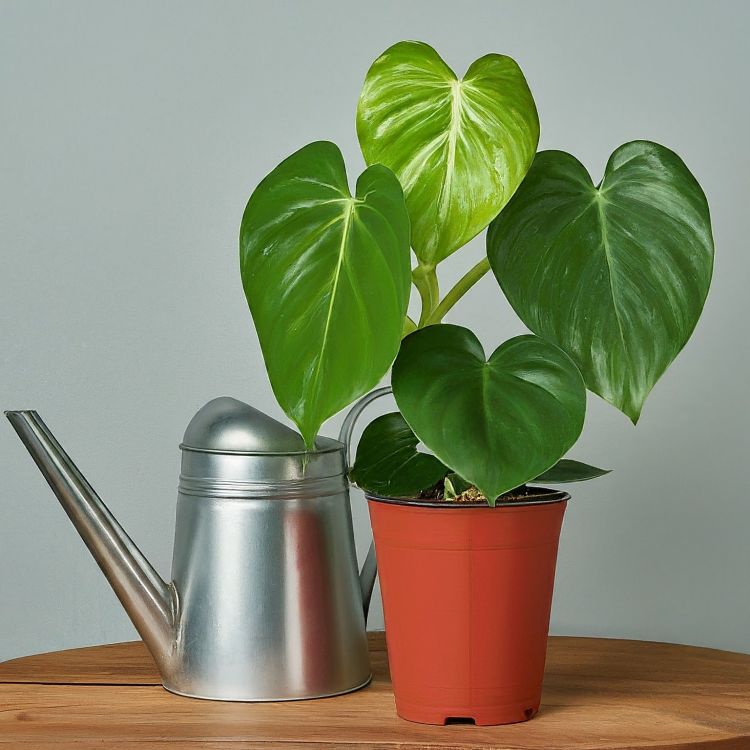
Maintaining a consistent watering routine is essential for the health of your philodendron, ensuring it thrives regardless of the season. As weather conditions change, so do the demands of your plant.
Factors like temperature, water availability, humidity levels, and light exposure all influence the condition of the soil. By adjusting your philodendron watering routine according to the weather, you provide your philodendron with the optimal conditions for growth. This adaptive approach to watering ensures that your plant receives the right amount of moisture to flourish, promoting healthy foliage and robust development year-round.
Philodendron Watering During Spring and Summer
During the warmer months, philodendrons experience active growth and heightened moisture requirements. With increased temperatures, the plant’s water loss through transpiration accelerates, necessitating more frequent watering to maintain optimal soil moisture levels. It’s advisable to water your philodendron once a week during summer and spring to accommodate its growth. Regularly monitor the soil’s moisture level by checking the top of the soil; if it feels dry to the touch, it’s time to water.
Philodendron Watering During Fall
As temperatures begin to cool in the fall, your philodendron may begin to enter a period of dormancy. During this time, it’s essential to scale back on watering to prevent waterlogged soil. With the plant’s slowed metabolic activity and reduced growth rate, excess moisture can lead to root rot and other issues. Allowing the soil to dry out slightly between waterings helps the philodendron adjust to its changing environment and prepares it for the dormant period ahead.
Philodendron Watering During Winter
In the cooler winter months, your philodendron’s growth significantly slows down as it enters a dormant period. During this time, it’s crucial to reduce watering frequency to prevent waterlogged conditions.
With the plant’s decreased metabolic activity and minimal growth, excess moisture in the soil can lead to root rot and other issues. Allowing the soil to dry out more between waterings helps maintain optimal soil conditions and prevents potential damage to the roots.
Choosing the right soil and pot for your philodendron is essential for ensuring proper watering and overall plant health.
Water Quality for Philodendron Watering
Ensuring the proper quality of water is essential for the health and vitality of your philodendron. Here are some considerations:
Avoid Chlorinated Water
Chlorine, commonly found in tap water, can be harmful to philodendrons. Allow tap water to sit out for at least 24 hours before using it for watering to allow the chlorine to dissipate. Alternatively, consider using filtered or distilled water.
Watch for Minerals
Hard water containing high levels of minerals such as calcium and magnesium can leave behind mineral deposits on the soil surface and hinder nutrient uptake by the plant. If you’re using tap water, consider periodically flushing the soil with distilled water to remove accumulated minerals.
Temperature of Water
While philodendrons can tolerate a range of water temperatures, it’s generally best to use water that is at or near room temperature. Avoid using water that is too cold or too hot, as extreme temperatures can shock the plant’s roots.
Rainwater
Collecting rainwater can be an excellent option for philodendron watering, as it is free of chemicals and often contains beneficial nutrients. Just be sure to avoid using rainwater collected from roofs treated with chemicals or pollutants.
Choosing the Right Soil and Pot for Your Philodendron
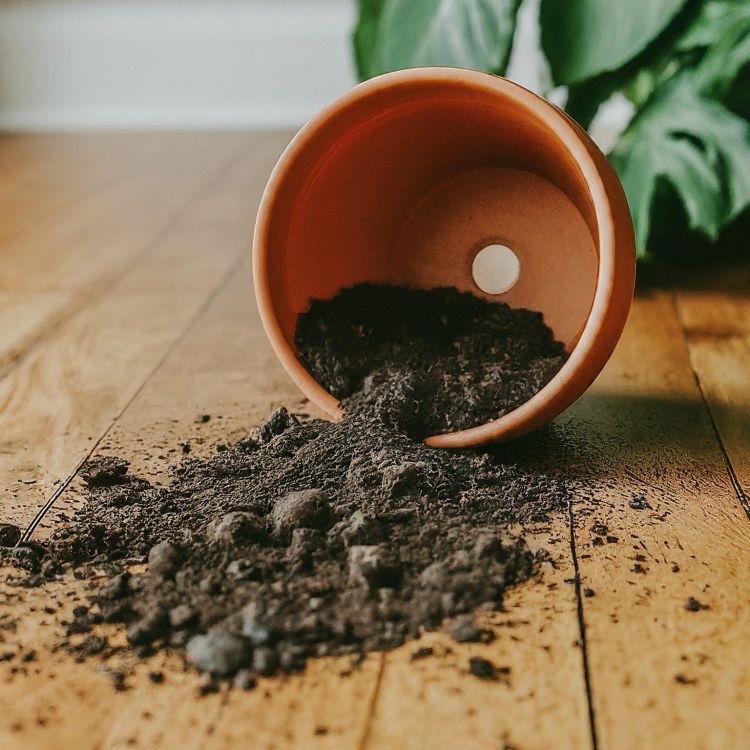
Choosing the right soil and pot for your Philodendron is crucial to maintaining its health and supporting proper watering practices.
Soil
Opt for a well-draining potting mix specifically formulated for tropical plants like philodendrons. These mixes typically contain a blend of peat moss, perlite, and pine bark, which provide good drainage while retaining moisture. Avoid heavy soils that can lead to waterlogged conditions and suffocate the roots. A loose, airy soil mix allows water to penetrate easily and excess moisture to drain away, preventing the risk of root rot.
Pot
Select a pot with adequate drainage holes at the bottom to allow excess water to escape freely. Choose a pot that is slightly larger than the plant’s current root ball to provide room for growth but avoid pots that are too large, as they can hold excess moisture and increase the risk of overwatering. Additionally, opt for pots made from porous materials like terracotta or ceramic, which allow for better airflow to the roots and help regulate soil moisture levels.
Signs of Overwatering in Philodendron
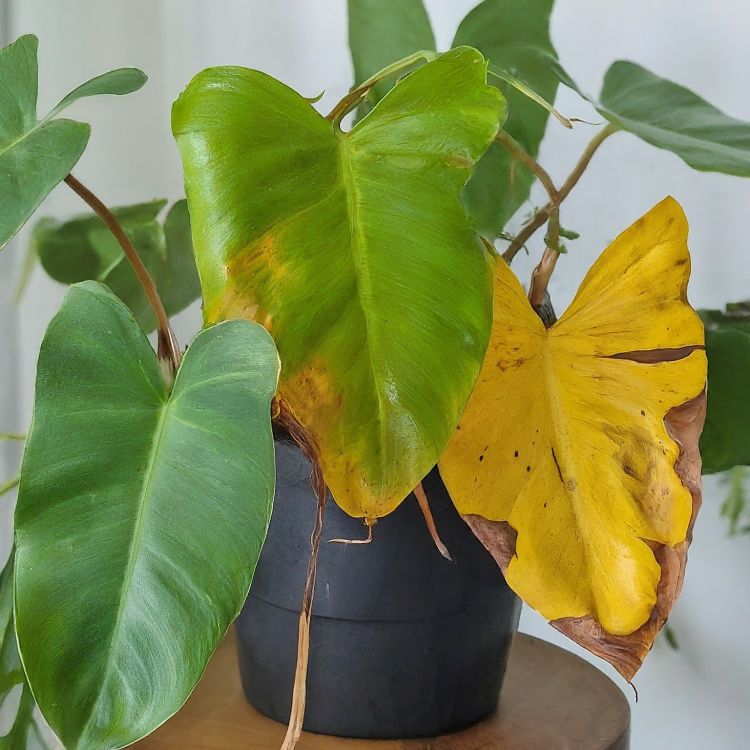
- Yellowing or wilting leaves, especially if they are soft and mushy to the touch.
- Leaf drop or premature leaf yellowing.
- Mold or mildew growth on the soil surface.
- A foul odor emanating from the soil, indicating rotting roots.
- Soil that remains constantly wet or waterlogged.
Solutions for Overwatering
Adjust Watering Frequency
Allow the soil to dry out more between waterings. Check the soil moisture before watering again, ensuring it is dry to the touch at least an inch deep.
Improve Drainage
Repot your philodendron into a container with drainage holes if it’s in a pot without them. Ensure excess water can escape freely to prevent waterlogging.
Modify Soil Mix
Use a well-draining potting mix with ingredients like perlite, vermiculite, or coarse sand to improve soil drainage.
Light and Temperature
Ensure your philodendron is receiving the appropriate amount of light and is not placed in a drafty or excessively cold location, which can slow down water uptake and increase the risk of overwatering.
Trim Affected Roots
If root rot is present, carefully trim away any mushy or rotting roots with sterile scissors to prevent further spread of the disease.
Reduce Watering Amount
When watering, ensure you’re not providing more water than necessary. Allow excess water to drain away from the pot, and avoid leaving your philodendron sitting in a saucer of water.
Signs of Underwatering in Philodendron
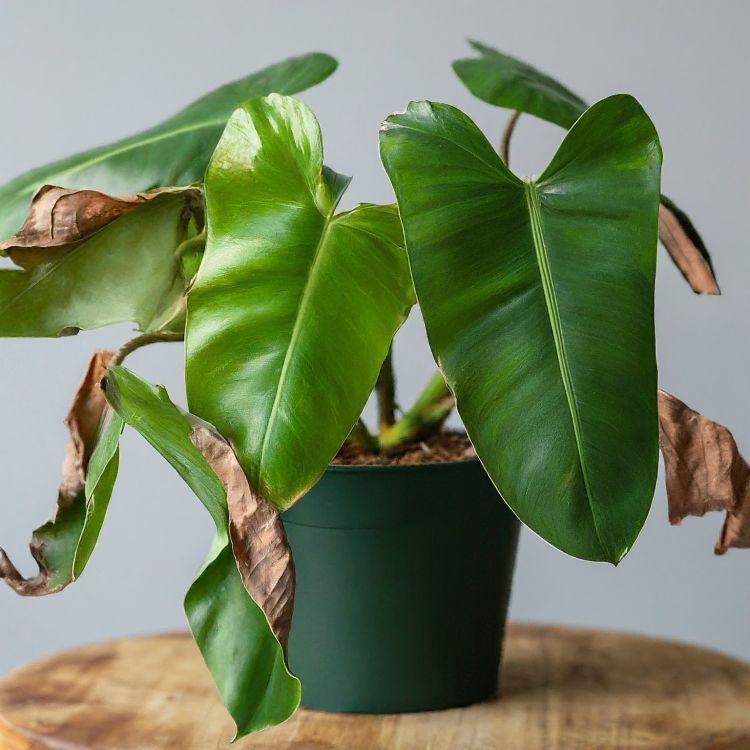
- Drooping or wilting leaves that appear dry and crispy to the touch.
- Slow growth or stunted development of new leaves.
- Yellowing or browning of leaf edges and tips.
- Dry soil that pulls away from the sides of the pot.
- Visible signs of stress such as leaf curling or distortion.
Solutions for Underwatering
Adjust Watering Frequency
Increase the frequency of watering to ensure the soil remains consistently moist. Check the soil moisture regularly and water when the top inch feels dry.
Water Thoroughly
When watering, ensure you thoroughly saturate the soil to reach the plant’s entire root system. Allow water to soak through the pot until it drains out of the bottom.
Humidity Enhancement
Increase humidity levels around your philodendron by misting its leaves regularly or placing a tray filled with water and pebbles near the plant. This helps prevent excessive moisture loss through transpiration.
Inspect Drainage
Ensure your pot has adequate drainage holes to prevent water from pooling around the roots. Consider repotting your philodendron into a container with better drainage if necessary.
Environmental Conditions
Avoid placing your philodendron in areas with excessive heat or direct sunlight, as this can lead to increased water loss through evaporation. Maintain a stable temperature and humidity level in the plant’s environment to reduce stress.
Prune Damaged Leaves
Trim any dry or browned leaves to encourage new growth and reduce stress on the plant. Focus on removing damaged foliage to redirect energy towards healthy growth.
FAQs
What type of water is best for philodendron watering?
For optimal health and vitality, it’s best to avoid chlorinated water. Allow tap water to sit for at least 24 hours to dissipate chlorine or use filtered or distilled water. Additionally, consider rainwater collected from chemical-free sources, as it is free of harmful chemicals and often contains beneficial nutrients.
How often should I water my philodendron?
The frequency of watering your philodendron depends on various factors such as pot size, soil type, environmental conditions, and specific species. Generally, water your philodendron when the top of the soil is dry to the touch.
How should I adjust my philodendron watering routine during different seasons?
During spring and summer, when philodendrons experience active growth, water once a week to accommodate increased moisture requirements. In fall, scale back watering as the plant enters dormancy to prevent waterlogged soil. In winter, reduce watering frequency further to account for decreased growth and metabolic activity.
How often should I water my philodendron?
The frequency of philodendron watering depends on various factors such as pot size, soil type, environmental conditions, and specific species. Generally, you should water your philodendron when the top inch or two of soil feels dry to the touch.
Mastering Philodendron Watering
Mastering the art of philodendron watering is essential for ensuring the health and longevity of your cherished plant. By understanding the basics of philodendron watering, including frequency, amount, water quality, soil, pot selection, and seasonal adjustments, you can provide your philodendron with the optimal conditions for vibrant growth and lush foliage. Remember to monitor your plant closely, adjust your watering routine as needed, and address any signs of overwatering or underwatering promptly. With proper care and attention to watering, your philodendron will continue to grace your living space with its beauty and vitality for years to come.

